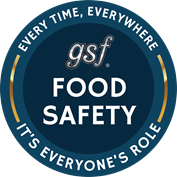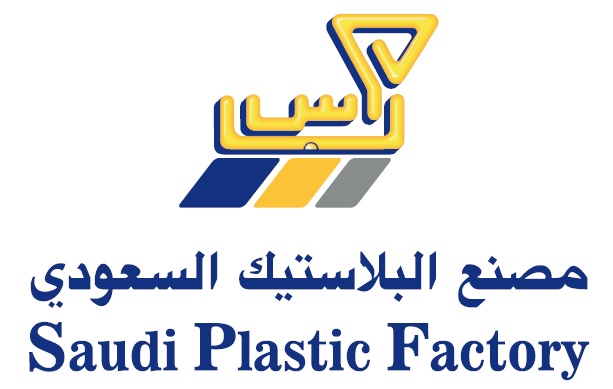Title Page
-
Site conducted
-
Hebert Candies LLC 2.5.5 Internal Audits & Inspections 10/22/2018 Rev 3 2.5.5.3 GMP Audi
-
Location
-
Conducted on
-
Prepared by
Current Good Manufacturing Practice
Current Good Manufacturing Practice
-
Has the food been manufactured under such conditions that it is fit for food?
-
Has the food been prepared, packed, or held under sanitary conditions whereby it may not have become contaminated with filth, or whereby it may not have been rendered injurious to health?
Facility and Grounds
Facility and Grounds
-
Are the grounds about your plant under your control kept in a condition that will protect against the contamination of food?
-
Are areas within the vicinity of the plant kept free from litter and waste with grass and weeds trimmed?
-
Are roads, yards and parking lots maintained to prevent sources of contamination?
-
Is there adequate drainage of outside areas that may contribute to contamination?
-
Are systems for waste treatment and disposal operated in a manner to protect against contamination?
-
Are steps taken to prevent sources of food contamination from bordering grounds not under the control of the facility?
-
Is there adequate lighting in all dressing and locker rooms and toilet areas?
-
Is there adequate lighting in all areas where food is processed, packed, or stored and where utensils and equipment are cleaned?
-
Are there safety-type light bulbs, fixtures, skylights, or other glass suspended over areas where food is exposed provided to protect against food contamination in case of glass breakage?
-
Are the plant buildings and structures of suitable size, construction, and design to maintain sanitary operations and to produce safe food?
-
Does the plant building(s) provide sufficient space for placement of equipment and storage of materials to permit maintenance of sanitary operations and production of safe food?
-
Does the design of the plant permit the separation of operations in which contamination is likely to occur which may include a separation of operations by location, time, space, partition, air flow, or other effective means?
-
Are there proper precautions to protect food in outdoor bulk fermentation vessels?
-
Are floors, walls and ceilings constructed to facilitate adequate cleaning?
-
Does drip or condensate from fixtures, ducts and pipes cause or potentially cause contamination of food, food contact surfaces or food packaging materials?
-
Are aisles and working spaces unobstructed and of adequate width to permit employees to perform their jobs and protect against contamination?
-
Are buildings, physical facilities, fixtures, etc. maintained in a good state of repair?
-
Is plumbing of adequate size and design to: carry sufficient quantities of water to required locations; properly convey sewage and liquid disposable waste from the plant; provide adequate floor drainage; and prevent backflow or cross connections between piping systems carrying fresh and waste water or sewage?
-
Is sewage disposal made into an adequate sewage system or disposed of by other adequate means?
-
Are rubbish and offal conveyed, stored, and disposed of in a proper manner?
-
Is the facility's water supply sufficient for the intended operations and from an adequate source?
-
Is water used in processing food or cleaning equipment safe and of adequate sanitary quality? Is running water at suitable temperature and under pressure?
-
Is reused water maintained to prevent the increase of contamination of food?
-
Are there adequate, reasonably accessible toilet facilities?
-
Are toilet facilities maintained in a sanitary condition and in good repair?
-
Do toilet facilities have self closing doors?
-
Are doors to the toilet facilities designed not to open into areas where food is exposed to airborne contamination or have double doors or positive airflow systems?
-
Are hand-washing facilities adequate, convenient, and furnished with running water at a suitable temperature?
-
Are hand-washing facilities furnished with adequate hand cleaning and sanitizing preparations?
-
Are hand-washing stations equipped with sanitary towel service or suitable drying service?
-
Are devices and fixtures in toilet facilities designed to protect against recontamination of clean, sanitized hands?
-
Are there readily understandable signs directing employees to wash and, where appropriate, sanitize their hands?
-
Are refuse receptacles constructed and maintained to protect against contamination of food?
-
Is there adequate screening or other protection against pests?
-
Are pests excluded from all areas of the food plant?
-
Are effective measures taken to exclude pests from processing areas?
-
Are there restrictions and precautions to insure that the use of insecticides and pesticides will not contaminate food, food product surfaces and food packaging material?
Personnel
Personnel
-
Does management take all reasonable measures and precautions to ensure disease control through medical exam, observation, exclusion, and reporting?
-
Are employees instructed to report health conditions that might contaminate food, food product surfaces or food packaging materials to their supervisor?
-
Does management take all reasonable measures and precautions to ensure cleanliness through hygienic practices?
-
Are employees trained to protect against contamination of food by properly wearing & suitable outer garments, hair nets, beard coverings, etc.?
-
Are employees trained to maintain adequate personal cleanliness?
-
Are employees trained to wash hands thoroughly before work and after each absence from their work station?
-
Are employees trained to remove unsecured jewelry and other objects that might fall into food?
-
Are gloves used for food handling made of an impermeable material and maintained in a clean sanitary condition?
-
Are employees trained to store clothing or other personal belongings away from areas where food is exposed or where equipment or utensils are washed?
-
Are employees trained to confine eating, drinking, gum chewing, and use of tobacco to areas where food is not exposed or equipment and utensils are not washed?
-
Are employees trained to protect against contamination of food, food contact surfaces, or food packaging materials from microorganisms or other foreign substances?
-
Do personnel responsible for identifying plant sanitation failures or food contamination have the combination of education and experience to produce clean, safe food?
-
Do food handlers and supervisors have appropriate training in proper food handling techniques and food protection principles?
-
Is the responsibility for assuring compliance by all personnel with the requirements & of the GMP regulation clearly assigned to competent supervisory personnel?
Equipment
Equipment
-
Are all plant equipment and utensils designed to be adequately cleanable and properly maintained?
-
Is equipment designed and constructed to preclude adulteration of food with: lubricants, fuel, metal fragments, and contaminated water?
-
Has equipment been installed in a way that facilitates cleaning of equipment and adjacent spaces?
-
Are food contact surfaces made of corrosion resistant and non-toxic material?
-
Are all equipment and utensils properly maintained?
-
Are holding, conveying and manufacturing systems designed in a way to be §110.40(d) maintained in a sanitary condition?
-
Are seams on food contact surfaces smoothly bonded or otherwise maintained to minimize growth of microorganisms or accumulation of dirt, food particles, etc.?
-
Is equipment taken apart for thorough cleaning as necessary?
-
Are the non-food contact surfaces of equipment in the food handling are constructed that it can be kept in a clean condition?
-
Are non-food-contact surfaces cleaned as often as necessary to protect against the contamination of food?
-
Are freezers and cold storage compartments fitted with appropriate temperature measuring and/or recording devices to accurately show the compartment temperature?
-
Are freezers and cold storage compartments fitted with automatic controls for regulating temperature or, in the case of manual operations, with an automatic alarm system to indicate a significant temperature change?
-
Are instruments and controls for measuring, regulating, or recording temperature, pH, water activity, acidity, etc. accurate (i.e. calibrated)?
-
Are compressed air or other gases mechanically introduced into food or used to clean food contact surfaces or equipment treated to insure that food is not contaminated with unlawful food additives?
-
Are cleaning and sanitizing of utensils and equipment performed in a manner to protect against contamination?
-
Are cleaning compounds and sanitizing agents free from microorganisms and safe for use?
-
Are toxic cleaning compounds, sanitizing agents, and pesticide chemicals used, identified, held, and stored in a manner to protect against contamination of food, food contact surfaces, and food packaging materials?
-
Are food contact surfaces including utensils and equipment surfaces cleaned frequently to protect against contamination?
-
Are food contact surfaces used for manufacturing or holding low-moisture food dry and in a sanitary condition at the time of use?
-
In wet processing, are food contact surfaces cleaned and sanitized before use and after any interruption during which contamination could occur?
-
Are single-service items (paper cups, towels, etc.) stored, handled, and dispensed in an appropriate manner?
-
Are sanitizing agents safe and adequate under conditions of use?
-
Are cleaned and sanitized portable equipment with food contact surfaces and utensils stored in a manner that protects them from contamination?
-
Are fans and other air blowing equipment located in a manner to prevent contamination of food, food contact surfaces and food packaging materials?
-
Is there adequate ventilation or control equipment to minimize odors and vapors?
-
All drawers in employee areas are empty of GMP/PPE supplies?
-
Are all cabinets and drawers in production and GMP areas locked when not in use?
Processes and Controls
Processes and Controls
-
Are operations conducted in accordance with adequate sanitation principles?
-
Is there an appropriate quality control operation employed to ensure that food is suitable for human consumption and that food packaging material is safe and suitable?
-
Are all reasonable precautions taken to ensure that production procedures protect from contamination from any source?
-
Do raw materials or other ingredients contain levels of microorganisms that may produce food poisoning or other disease?
-
Are ingredients that contain microorganisms that may cause disease pasteurized or otherwise treated?
-
Are raw materials inspected, segregated or otherwise handled as necessary to ascertain that they are clean and ready for use?
-
Is all adulterated food (within the meaning of the FD&C Act) either rejected or treated/processed to eliminate contamination?
-
Is appropriate chemical, microbial, or extraneous material testing conducted to identify sanitation failures or possible food contamination?
-
Are containers inspected to ensure they do not contribute to contamination?
-
Do raw materials and other ingredients comply with FDA regulations, guidelines, & and action levels for poisonous or deleterious substances?
-
Are raw materials and other ingredients, including rework, held in bulk or in containers designed to protect against contamination?
-
Are raw materials held at temperature and humidity levels that prevent food from being adulterated?
-
Are raw materials scheduled for rework identified as such?
-
Are frozen raw materials and other ingredients kept frozen?
-
Is there careful monitoring of physical factors such as time, temperature, humidity, pH, pressure, and manufacturing operations such as freezing, dehydration, heat processing,etc.?
-
Are foods that can support the rapid growth of microorganisms held in a manner to prevent adulteration?
-
Are refrigerated foods kept at 45°F (7.2°C) or below as appropriate?
-
Are hot foods maintained at 140°F (60°C) or above?
-
Are acid or acidified foods held in hermitically sealed containers at ambient temperatures heat treated?
-
Are measures such as sterilizing, irradiating, pasteurizing, freezing, refrigerating, control of pH or water activity adequate to prevent the growth of undesirable microorganisms?
-
Is work in progress handled in a manner that protects against contamination?
-
Are effective measures taken to protect finished food from contamination by raw materials, other ingredients or refuse?
-
Are equipment, containers, and utensils used to process food constructed, handled, and maintained in a manner that protects against food contamination?
-
Are liquid or dry materials and other ingredients received and stored in bulk held in a manner to protect against contamination?
-
Are traps, sieves, metal detectors, magnets, etc. used to detect the inclusion of metal or other extraneous material?
-
Are food, raw materials and other ingredients that are adulterated disposed of in a manner to protect other food from contamination?
-
When reconditioning of adulterated food is done, is a proven effective method used?
-
Is reconditioned food examined and found free of contamination before being incorporated with other food?
-
Are mechanical manufacturing steps performed so as to protect food from contamination?
-
Is heat blanching, when required, performed in an effective manner and washed, when required, with water of safe and adequate sanitary quality?
-
Are batters, breading, and other similar preparations treated or maintained in a manner that protects against contamination?
-
Are filling, assembling, and packaging operations protected against contamination by use of safe and suitable material for food containers and packaging materials?
-
Are critical control points identified and controlled for filling, assembling, and packaging operations?
-
Are foods that rely on the control of water activity preventing the growth of undesirable microorganisms processed and maintained at a safe moisture level?
-
Are foods that rely principally on the control of pH for preventing the growth of undesirable microorganisms monitored and maintained at pH 4.6 or below?
-
Has ice in contact with food been made from water that is safe and of adequate sanitary quality and manufactured in accordance with GMPs?
-
Are human food manufacturing areas or equipment not used for manufacturing nonhuman food-grade animal feed or inedible products unless contamination of the human food is not reasonably possible?
-
Is the storage and transportation of finished food under conditions that protect against physical, chemical, or microbial contamination?
-
Is food containing defects above current defect action levels mixed with other lots of food?
-
Does the finished product contain natural or unavoidable defects at low, non hazardous levels?
-
Have Good Manufacturing Practices been followed in producing the food?
-
Has food containing defects above the current defect action level been mixed with another lot of food?
Completion
Completion
-
Recommendation
-
Full Name and Signature of Inspector











